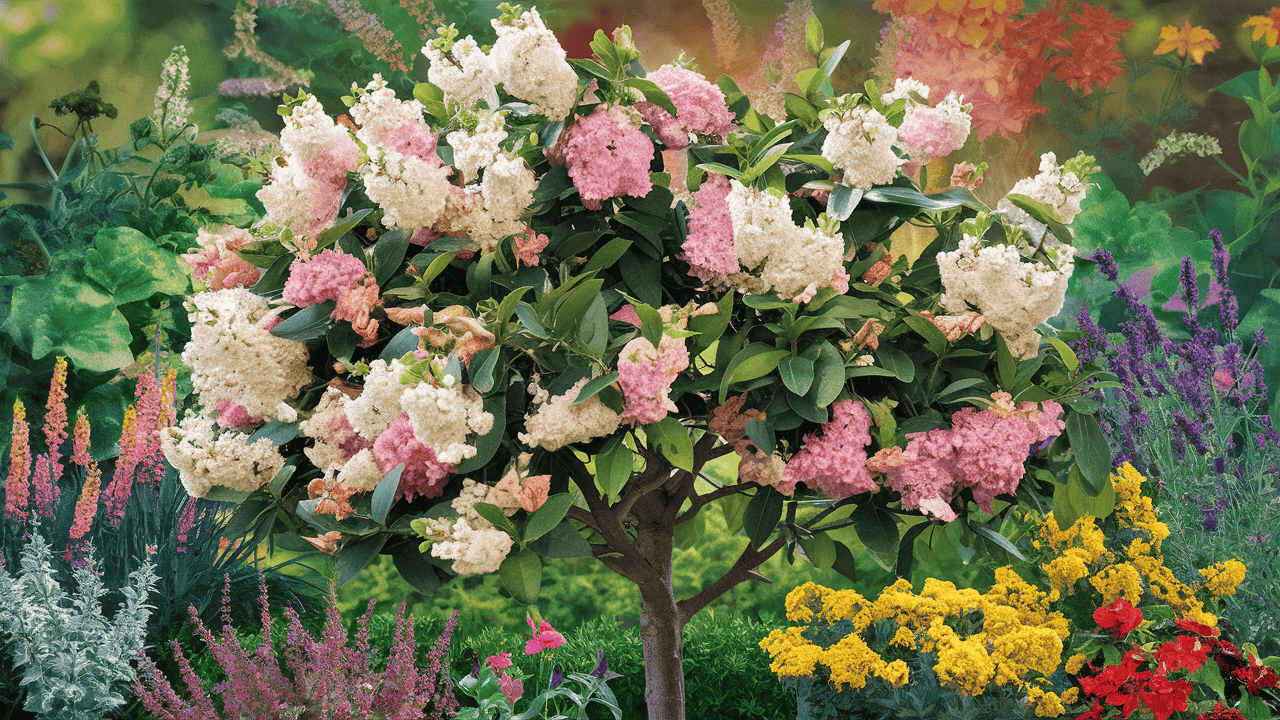Crepe myrtles (Lagerstroemia spp.) are beloved for their vibrant blooms, striking bark, and graceful, multi-trunked forms. These versatile trees thrive in warm climates and add a touch of elegance to any landscape. But did you know that carefully selected companion plants can further enhance the beauty and interest of your crepe myrtle plantings? In this blog post, we’ll explore four exceptional choices that complement the crepe myrtle’s charms.
Hosta (Hosta spp.)
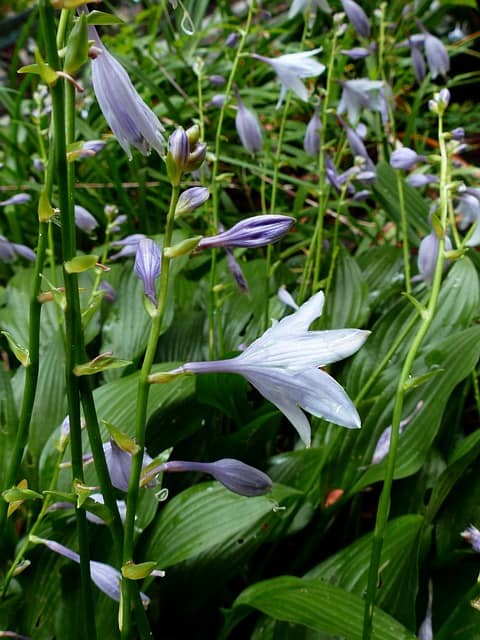
Hosta, also known as the “Plantain Lily,” is a genus of shade-loving perennials that offer a lush, textural contrast to the delicate crepe myrtle foliage. With their broad, sculptural leaves in a range of colors and patterns, hostas create a captivating understory beneath the crepe myrtle’s canopy. Consider planting varieties like ‘Halcyon’ with its cool blue-green leaves or ‘Patriot’ with its striking white-edged leaves. The combination of the crepe myrtle’s airy branches and the hosta’s bold foliage is a harmonious and visually striking pairing.
Salvia (Salvia spp.)
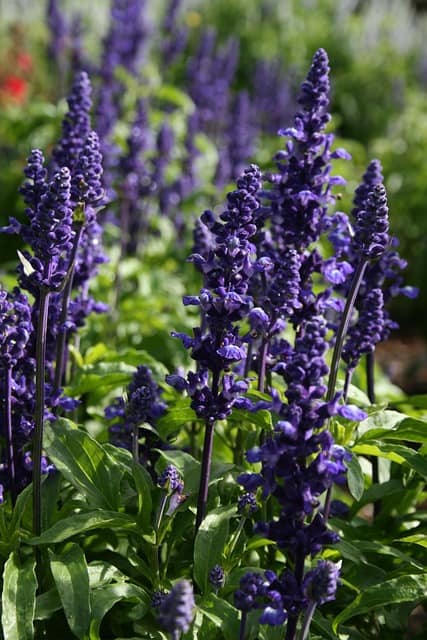
Salvia, or sage, is a diverse genus that includes both annual and perennial species. These vibrant, nectar-rich flowers complement the crepe myrtle’s blooms beautifully. Try planting the deep purple ‘Black and Blue’ salvia or the fiery red ‘Lighthouse’ salvia around the base of your crepe myrtle. The salvia’s upright spikes and jewel-toned hues create a stunning contrast that draws the eye and attracts pollinators. The crepe myrtle’s showy flowers and the salvia’s long-lasting blooms work in tandem to extend the season of interest in your garden.
Liriope (Liriope spicata)

Liriope, also known as “Lilyturf,” is a versatile, low-growing perennial that thrives in the partial shade cast by crepe myrtles. Its grass-like foliage and delicate flower spikes provide a soft, flowing complement to the crepe myrtle’s bold form. Liriope is an excellent choice for edging beds or cascading over retaining walls, creating a seamless transition between the crepe myrtle and the surrounding landscape. The deep green of the liriope leaves also helps to accentuate the crepe myrtle’s vibrant bark and flowers.
Roses (Rosa)

While not a traditional companion plant, roses can make a stunning pairing with crepe myrtles. The crepe myrtle’s airy, open growth habit provides the perfect backdrop for the rose’s lush, romantic blooms. Consider planting climbing roses, such as ‘New Dawn’ or ‘Blaze,’ which can be trained to weave through the crepe myrtle’s branches. Alternatively, shrub roses like ‘Drift’ or ‘Knock Out’ make excellent groundcover plants around the base of the crepe myrtle. The contrast between the crepe myrtle’s delicate flowers and the rose’s bold, fragrant blossoms creates a visually captivating and harmonious display.
Fountain Grass (Pennisetum spp.)

Fountain grass is a genus of ornamental grasses that pair beautifully with crepe myrtles. The airy, arching foliage of fountain grass, such as the cultivar ‘Hameln,’ creates a soft, flowing contrast to the crepe myrtle’s structured branching. As the crepe myrtle blooms, the fountain grass will sway gracefully in the breeze, drawing the eye and adding movement to the landscape. The delicate plumes of the fountain grass also echo the crepe myrtle’s delicate flowers, creating a harmonious and visually captivating pairing.
Russian Sage (Perovskia atriplicifolia)
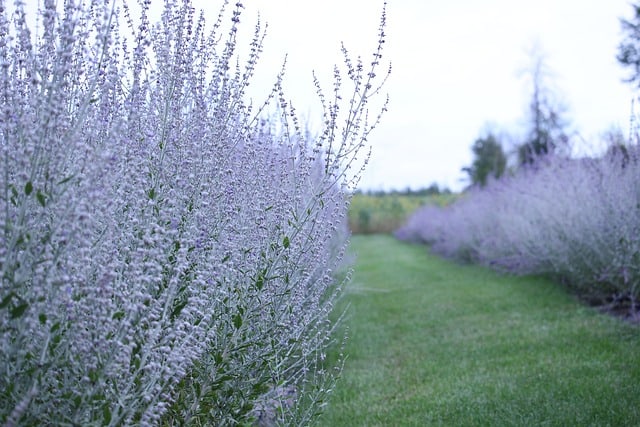
Russian sage is a drought-tolerant, aromatic perennial that thrives in the same warm, sunny conditions as crepe myrtles. Its silvery-gray foliage and lavender-blue flower spikes provide a striking contrast to the crepe myrtle’s vibrant blooms. Plant Russian sage around the base of the crepe myrtle or intersperse it throughout the planting bed. The combination of the crepe myrtle’s bold, colorful flowers and the Russian sage’s soft, hazy hues creates a visually stunning and calming effect.
Daylilies (Hemerocallis spp.)
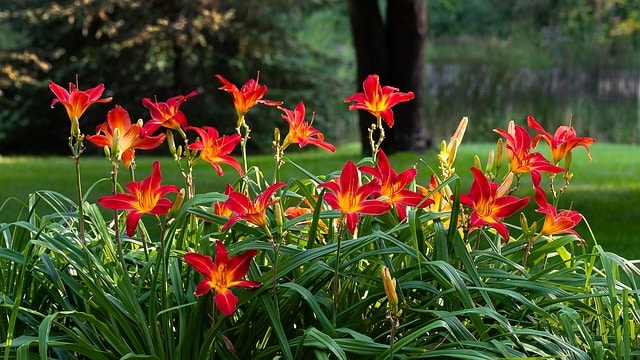
Daylilies are versatile, easy-to-grow perennials that make excellent companions for crepe myrtles. With their vibrant, trumpet-shaped flowers and lush, grassy foliage, daylilies complement the crepe myrtle’s delicate blooms. Consider planting daylily cultivars like ‘Stella de Oro’ or ‘Pardon Me’ around the base of the crepe myrtle. As the daylilies flower in succession, they will extend the season of interest and create a captivating tapestry of color beneath the crepe myrtle’s canopy.
Butterfly Bush (Buddleja spp.)
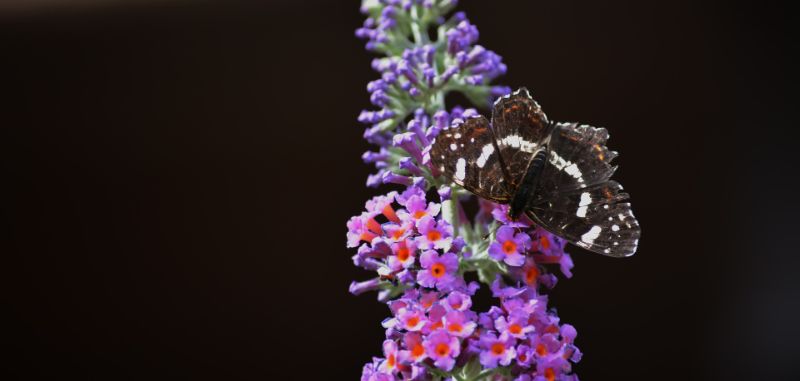
Butterfly bush is a magnet for pollinators, making it an excellent companion for crepe myrtles. The arching, fragrant flower spikes of the butterfly bush echo the crepe myrtle’s delicate blooms, while the butterfly bush’s rapid growth and spreading habit can help to fill in any gaps around the crepe myrtle’s base. Plant butterfly bush cultivars like ‘Davidii’ or ‘Lo & Behold’ to create a lively, nectar-rich understory that will attract a diverse array of butterflies, bees, and hummingbirds to your crepe myrtle planting.
Catmint (Nepeta spp.)
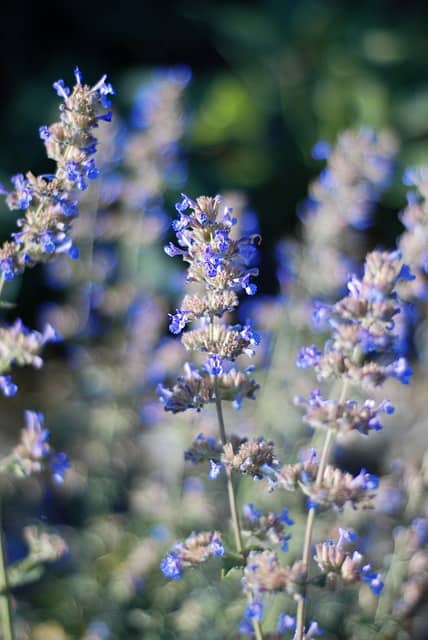
Catmint is a fragrant, drought-tolerant perennial that thrives in the same sunny conditions as crepe myrtles. Its cascading, silvery-green foliage and lavender-blue flower spikes create a beautiful contrast to the crepe myrtle’s bold, colorful blooms. Consider planting cultivars like ‘Walker’s Low’ or ‘Six Hills Giant’ around the base of the crepe myrtle, allowing the catmint to spill over the edges and soften the transition between the tree and the surrounding garden. The catmint’s aromatic leaves and nectar-rich flowers will also attract a variety of pollinators, further enlivening the crepe myrtle planting.
Coneflowers (Echinacea spp.)
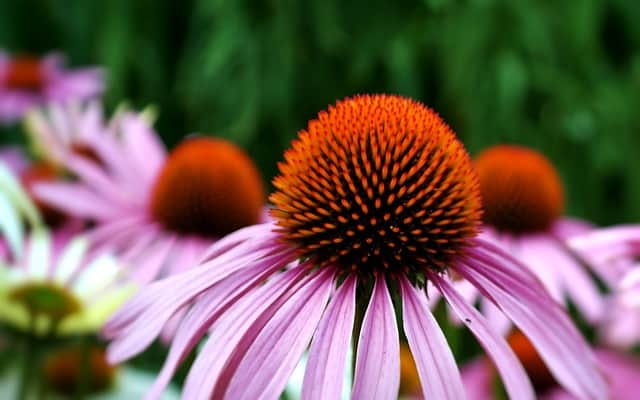
Coneflowers are vibrant, daisy-like perennials that make excellent companions for crepe myrtles. Their bold, jewel-toned petals and prominent central cones echo the crepe myrtle’s showy flowers, creating a harmonious and visually striking pairing. Plant coneflower cultivars like ‘Purple Coneflower’ or ‘Sundown’ around the base of the crepe myrtle, allowing their long-lasting blooms to extend the season of interest. The coneflowers’ drought tolerance and ability to thrive in full sun make them a low-maintenance addition to your crepe myrtle planting.
Black-eyed Susan (Rudbeckia spp.)

Black-eyed Susan is a cheerful, sun-loving perennial that complements the crepe myrtle’s elegant form. With its golden-yellow petals and dark central cones, the black-eyed Susan’s vibrant hues provide a striking contrast to the crepe myrtle’s delicate blooms. Consider planting cultivars like ‘Goldstrum’ or ‘Becky Mixed’ around the base of the crepe myrtle, allowing their long-blooming flowers to create a lively, naturalistic groundcover. The black-eyed Susan’s ability to self-seed and spread will help to fill in any gaps, creating a cohesive and visually dynamic planting.
Ornamental Grasses (Miscanthus spp.)
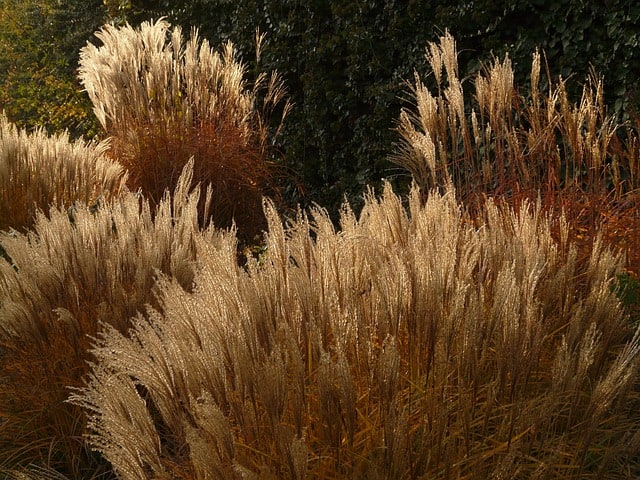
Ornamental grasses, such as Miscanthus or “Maiden Grass,” make excellent companions for crepe myrtles. The tall, graceful plumes of the ornamental grasses echo the crepe myrtle’s arching branches, while their delicate, swaying movement adds a sense of lightness and movement to the landscape. Plant Miscanthus cultivars like ‘Gracillimus’ or ‘Variegatus’ around the base of the crepe myrtle, allowing their foliage to spill over the edges and create a soft, flowing transition. The ornamental grasses’ ability to thrive in full sun and their low maintenance requirements make them a practical and aesthetically pleasing choice for crepe myrtle plantings.
Coreopsis (Coreopsis spp.)
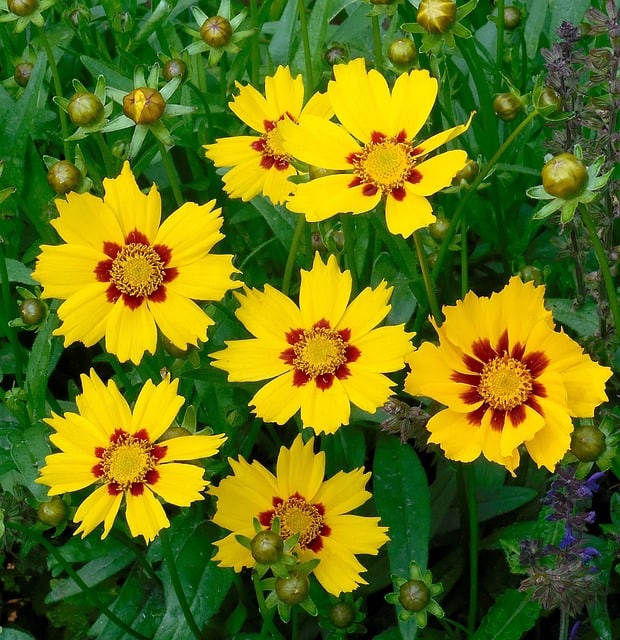
Coreopsis, also known as “Tickseed,” is a cheerful, sun-loving perennial that pairs beautifully with crepe myrtles. Its daisy-like flowers, available in a range of warm hues like yellow, orange, and red, create a lively contrast to the crepe myrtle’s delicate blooms. Consider planting cultivars like ‘Sunray’ or ‘Moonbeam’ around the base of the crepe myrtle, allowing their long-lasting flowers to extend the season of interest. The coreopsis’s drought tolerance and ability to thrive in full sun make it a low-maintenance and reliable companion for your crepe myrtle.
Shasta Daisy (Leucanthemum x superbum)
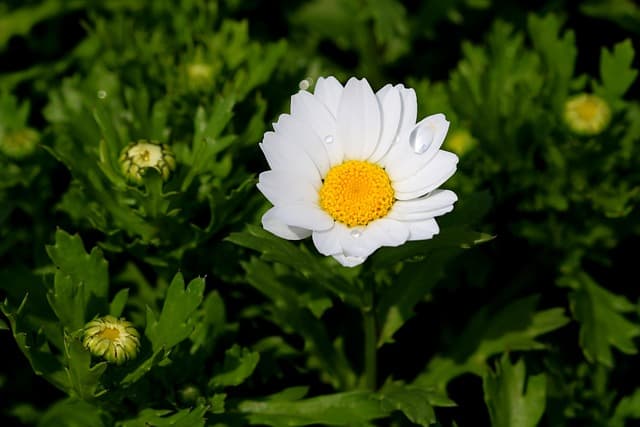
The classic Shasta daisy is a timeless perennial that complements the crepe myrtle’s elegant form. With its bright white petals and sunny yellow centers, the Shasta daisy’s vibrant blooms create a striking contrast to the crepe myrtle’s delicate flowers. Plant Shasta daisy cultivars like ‘Becky’ or ‘Snowcap’ around the base of the crepe myrtle, allowing their long-lasting flowers to create a cheerful, naturalistic groundcover. The Shasta daisy’s ability to tolerate full sun and its compact, mounding habit make it an excellent choice for framing the crepe myrtle’s branching structure.
Verbena (Verbena spp.)

Verbena is a versatile, drought-tolerant perennial that thrives in the same warm, sunny conditions as crepe myrtles. Its clusters of small, vibrant flowers, available in shades of pink, purple, and red, provide a lively complement to the crepe myrtle’s blooms. Consider planting trailing verbena cultivars like ‘Homestead Purple’ or ‘Superbena Royale Chambray’ around the base of the crepe myrtle, allowing their cascading habit to soften the transition between the tree and the surrounding garden. The verbena’s long flowering season and ability to self-seed will help to maintain a continuous display of color.
Agapanthus (Agapanthus spp.)
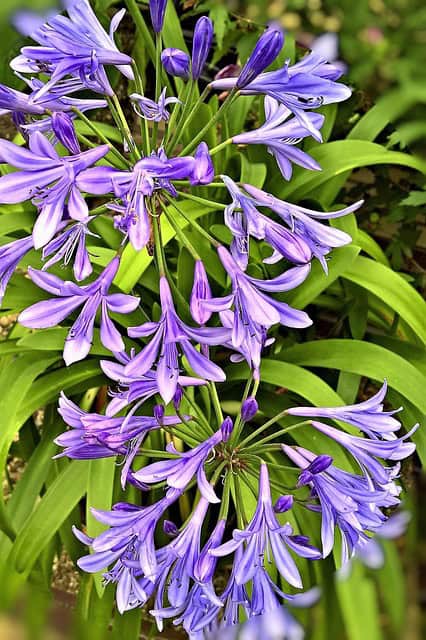
Agapanthus, also known as the “African Lily,” is a bold, architectural perennial that makes a striking companion for crepe myrtles. Its large, spherical flower heads, in shades of blue and white, echo the crepe myrtle’s delicate blooms on a grander scale. Plant Agapanthus cultivars like ‘Headbourne Hybrids’ or ‘Storm Cloud’ around the base of the crepe myrtle, allowing their stately foliage and dramatic flowers to create a visually captivating contrast. The Agapanthus’s ability to thrive in full sun and its clumping growth habit make it a low-maintenance and long-lasting addition to your crepe myrtle planting.
Lamb’s Ear (Stachys byzantine)
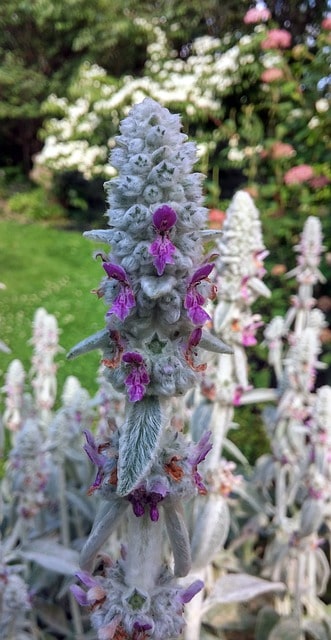
Lamb’s Ear is a charming, velvety-leaved perennial that complements the crepe myrtle’s elegant form. Its soft, silvery-gray foliage provides a beautiful contrast to the crepe myrtle’s vibrant blooms, while its low-growing, spreading habit helps to create a cohesive, ground-covering effect. Consider planting Lamb’s Ear cultivars like ‘Big Ears’ or ‘Helen von Stein’ around the base of the crepe myrtle, allowing its dense, cushiony growth to frame the tree’s trunk and lower branches. The Lamb’s Ear’s ability to thrive in full sun and its drought tolerance make it a reliable and low-maintenance companion for your crepe myrtle.
Hydrangeas (Hydrangea spp.)
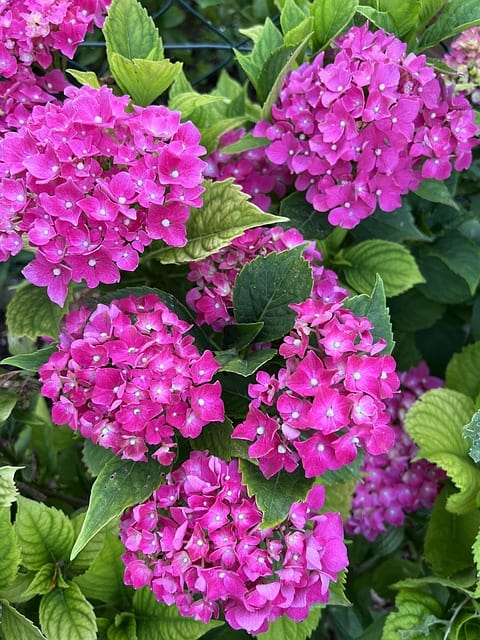
Hydrangeas are a classic, shade-loving companion for crepe myrtles, providing a beautiful contrast to the tree’s sun-loving nature. Consider planting cultivars like ‘Endless Summer’ or ‘Nikko Blue’ in the partial shade beneath the crepe myrtle’s canopy, allowing their large, showy flower heads to complement the delicate blooms above. The hydrangeas’ lush, green foliage will also help to create a sense of depth and layering in the planting, while their ability to thrive in dappled shade makes them a practical choice for areas with limited direct sunlight.
Periwinkle (Vinca minor)
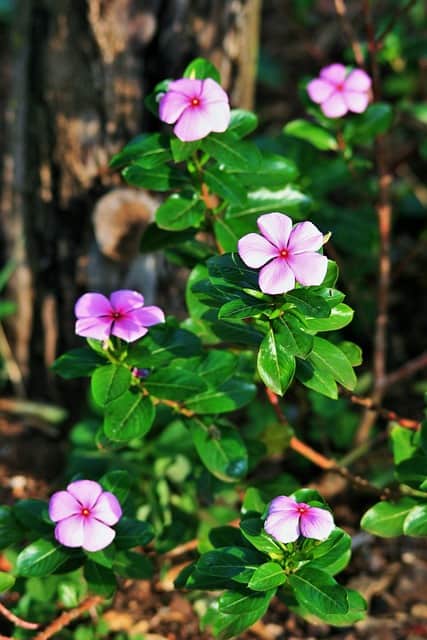
Periwinkle, also known as Vinca, is a hardy, evergreen groundcover that makes an excellent companion for crepe myrtles. Its glossy, dark green foliage and delicate, lavender-blue flowers create a beautiful contrast to the crepe myrtle’s vibrant blooms. Consider planting Vinca cultivars like ‘Bowles’ or ‘Illumination’ around the base of the crepe myrtle, allowing their trailing habit to spill over the edges and soften the transition between the tree and the surrounding garden. The Vinca’s ability to thrive in partial shade and its drought tolerance make it a low-maintenance and versatile choice for crepe myrtle plantings.
Sedum (Sedum spp.)
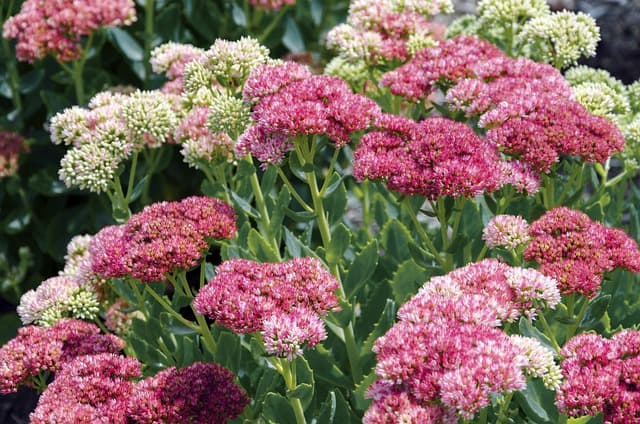
Sedum, or “Stonecrop,” is a diverse genus of succulent perennials that pair beautifully with crepe myrtles. With their fleshy, often colorful foliage and delicate flower clusters, sedums provide a unique and eye-catching contrast to the crepe myrtle’s bold blooms. Plant Sedum cultivars like ‘Autumn Joy’ or ‘Angelina’ around the base of the crepe myrtle, allowing their compact, spreading habit to create a lush, textural groundcover. The sedums’ ability to tolerate full sun and their low water requirements make them a practical and drought-resistant companion for your crepe myrtle.
Lenten Rose (Helleborus orientalis)
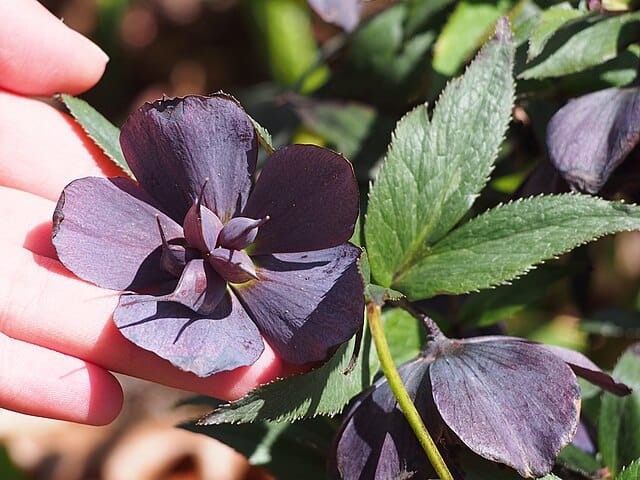
The Lenten Rose, or Hellebore, is an early-blooming perennial that thrives in the partial shade beneath crepe myrtles. Its large, cup-shaped flowers, often in shades of pink, purple, or white, provide a delicate and unexpected complement to the crepe myrtle’s vibrant blooms. Consider planting Hellebore cultivars like ‘Ivory Prince’ or ‘Honeymoon Mix’ around the base of the crepe myrtle, allowing their evergreen foliage to create a lush, year-round presence. The Lenten Rose’s ability to tolerate partial shade and its long flowering season make it a valuable addition to your crepe myrtle planting.
Azalea (Rhododendron spp.)
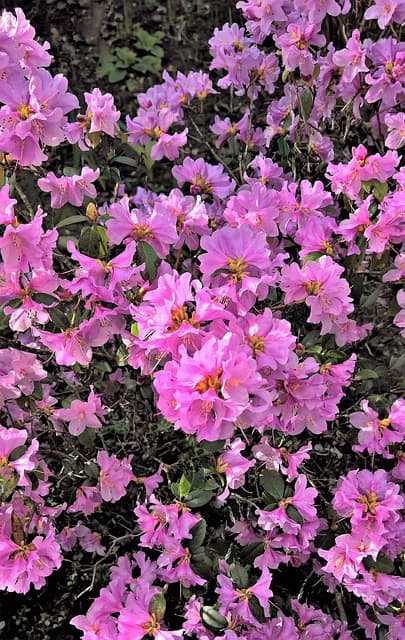
Azaleas are a classic companion for crepe myrtles, sharing a similar preference for well-drained, acidic soil and partial shade. Their showy, trumpet-shaped flowers, available in a wide range of colors, create a beautiful contrast to the crepe myrtle’s delicate blooms. Plant Azalea cultivars like ‘Encore’ or ‘Girard’s Hot Shot’ around the base of the crepe myrtle, allowing their dense, mounding habit to frame the tree’s trunk and lower branches. The Azalea’s ability to thrive in the dappled shade provided by the crepe myrtle’s canopy makes it a practical and visually harmonious choice for your planting.


